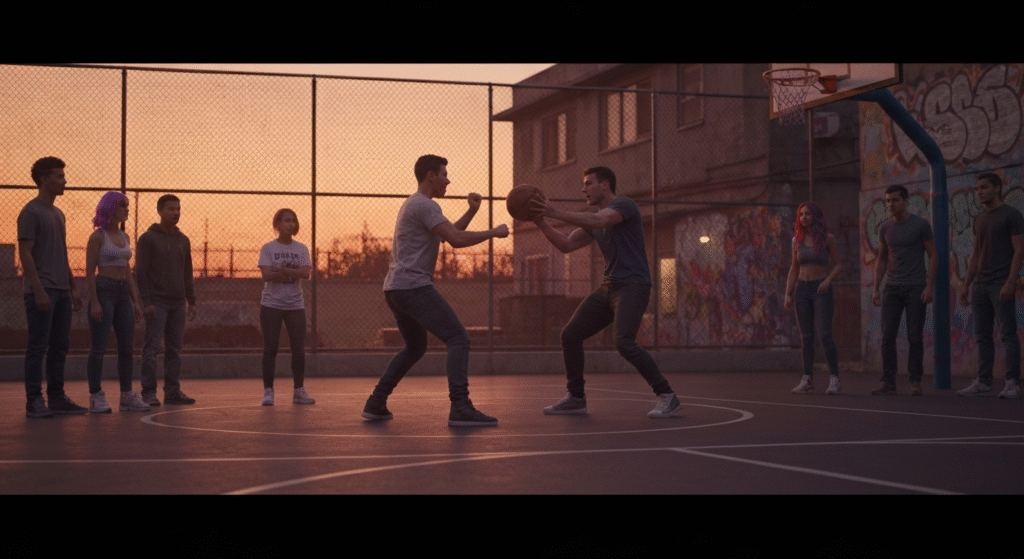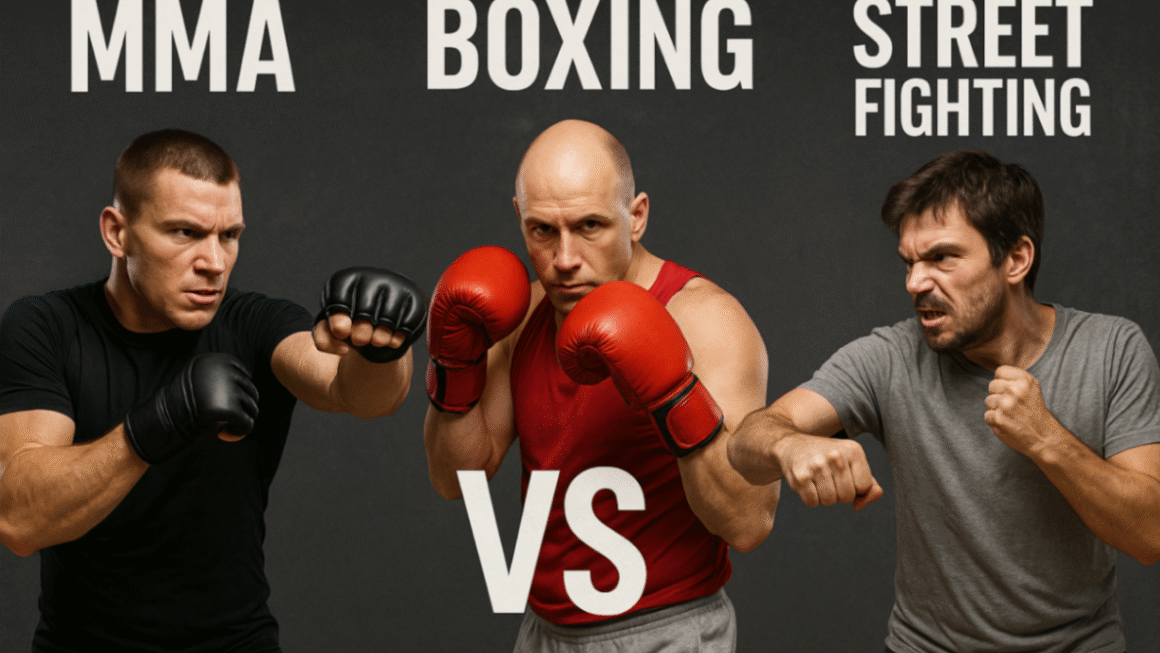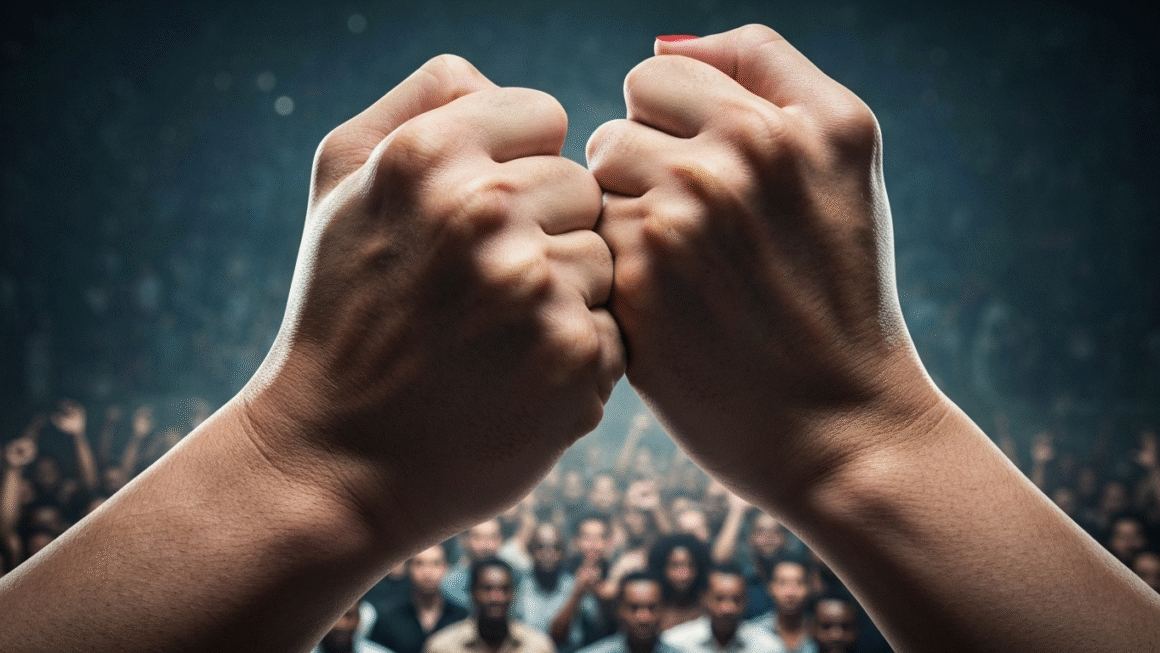Key Highlights
- The emergence of ghetto fight videos has significantly influenced street culture, gaining traction on various online platforms.
- Hood fights are characterized by specific community norms and unwritten rules that distinguish them from regular street fights.
- Social media plays a pivotal role in amplifying these videos, contributing to their virality and public fascination.
- There are organized underground networks that facilitate the setup of hood fights, showcasing a structured approach to these events.
- The connection between hood fights and martial arts techniques highlights a surprising depth in the combat skills exhibited.
- Viral and famous hood fights have become cultural touchstones, shaping perceptions and discussions around hood culture today.
Introduction
Understanding the dynamics of hood culture today necessitates an exploration of ghetto fight videos. These recordings serve as more than mere entertainment; they encapsulate a raw authenticity that resonates deeply within urban communities. The phenomenon speaks to a larger narrative, reflecting socio-cultural elements, rivalry, and the code of honor that influences behavior in these environments. Through the lens of visualization and collective memory, ghetto fight videos often highlight unique interpersonal relationships and the complex hierarchies present within these communities. They provide insight into the unwritten rules that govern conduct during these incidents, allowing viewers to glean valuable lessons about conflict resolution, social interaction, and the convergence of art and survival. This trend has gained momentum, reshaping perceptions and interactions within digital spaces.
The Rise of Ghetto Fight Videos in Hood Culture Today: Key Aspects Shaping the Trend

Recent developments within hood culture highlight the emergence and popularity of ghetto fight videos, which have become an intriguing aspect of modern digital entertainment. These visuals serve not just as chaotic displays of physical confrontations, but also as cultural artifacts that embody a distinct social narrative. Dominating platforms like YouTube and Instagram, these videos often reflect community dynamics, encapsulating tension, camaraderie, and resilience among participants. The format of these videos offers an unfiltered lens into the lives and struggles of individuals, facilitating a sense of belonging and identity. Such content frequently involves unwritten rules, improvisation, and raw energy, showcasing an unscripted authenticity that resonates with viewers. As a result, the proliferation of these videos significantly contributes to the broader conversation surrounding societal challenges and the intricate nature of hood life.
1. The Distinction Between Hood Fights and Regular Street Fights
Hood fights often reflect a unique, cultural context not found in typical street altercations. Unlike regular street fights, which may stem from random aggression or misunderstandings, hood fights are typically influenced by a complex web of social dynamics, including community identity and reputation. Participants may engage with a code that governs the escalation and conduct of these confrontations, prioritizing honor and respect within their environment. Additionally, the presence of an audience plays a crucial role in hood fights, creating an element of performance that sets them apart. This spectator aspect can amplify the stakes, as fighters seek validation and notoriety among peers. Thus, the intersection of social commentary and athleticism in hood fights represents a distinctive cultural phenomenon, echoing the nuances of urban life and solidarity.
2. Unwritten Rules and Codes Observed During Hood Fights
Unwritten rules and codes during hood fights serve as an informal framework guiding participants and spectators alike. These guidelines foster a sense of respect and order amidst chaos, revealing the cultural intricacies of the environment. For instance, it is commonplace for fighters to establish consent before engaging, emphasizing the importance of mutual agreement in this high-stakes context. Additionally, the concept of “fair one” dictates that no outside interference is permitted, ensuring that the duel remains respectful and direct. Spectators are expected to uphold these unwritten codes by maintaining a respectful distance, reinforcing the boundary between combatants and onlookers. Such nuances reflect not merely a social structure but also the psychological dynamics at play, showcasing how an unspoken understanding governs behavior in these intense encounters.
3. Popular Online Platforms for Hood Fight Videos
Various platforms have become hotspots for sharing hood fight videos, reflecting the growing fascination with this facet of street culture. YouTube stands out, providing a vast audience for creators who curate and upload these clips, often enhancing them with commentary or analysis, fostering a sense of community among viewers. TikTok has also emerged as a powerful player, enabling quick dissemination and viral trends surrounding these fights, often accompanied by remix culture that shapes the narrative. Social media acts as a catalyst, fueling engagement and discussions, while Instagram fosters a more visual storytelling approach, allowing users to share clips in real-time. The accessibility of these platforms ensures that hood fight videos continue to circulate, reinforcing their significance within urban culture, driving both curiosity and engagement from diverse audiences.
4. Organization and Setup of Underground Hood Fights
Underground hood fights often emerge from a blend of raw energy and grassroots organization. Typically, these events lack the formal structure found in regulated combat sports, yet they thrive on community participation and local influence. Naturally, an implicit network of coordinators spreads information, setting the stage for clandestine matches that attract both fighters and spectators. The atmosphere is charged with anticipation, where everything from the chosen location to monetary stakes creates a high-stakes environment. Participants often adhere to an unwritten code, ensuring the event remains socially acceptable within their community. This unique organization emphasizes respect, reputation, and resilience, framing the fight not just as a contest, but as a cultural expression that resonates deeply within hood culture.
5. Social Media’s Role in Amplifying Hood Fight Videos
The influence of social media has drastically transformed the dissemination of hood fight videos, serving as a catalyst for their rapid spread. Platforms like Instagram, TikTok, and YouTube create an environment where these videos not only gain visibility but also reach diverse audiences globally. Content creators engage in the strategic use of hashtags and trending challenges, harnessing the principles of virality to ensure increased viewership. Engagement metrics, such as likes, shares, and comments, contribute to the reinforcement of these videos within digital communities. Consequently, this online phenomenon not only normalizes hood fights but also cultivates a narrative that shapes perceptions around them. The interactivity of social media has consequently led to a more immersive experience, drawing in viewers who are captivated by the raw and unfiltered nature of these cinematic clashes.
6. Connections Between Hood Fights and Martial Arts Techniques
The influence of martial arts techniques on hood fights is often evident, demonstrating a surprising depth to these encounters. While many perceive these altercations as chaotic brawls, participants sometimes employ striking fundamentals and defensive maneuvers reminiscent of karate, boxing, or jiu-jitsu. This not only highlights their physicality but also reflects an unconscious adoption of strategies grounded in discipline and skill. Traditional martial arts emphasize respect and control, contrasting starkly with the improvised nature of hood fights. However, the basic principles—like footwork, stance, and timing—can emerge in spontaneous confrontations. As a result, some fighters develop their unique styles, merging street wisdom with elements learned through watching martial arts films or practicing in informal settings, creating a blend of cultural expression and combat proficiency.
7. Common Reasons Behind the Outbreak of Hood Fights
Tensions often simmer beneath the surface in urban neighborhoods, acting as catalysts for confrontations. Disputes over respect and territorial integrity frequently fuel the spark for hood fights. Individuals may feel compelled to defend their reputation or assert dominance within their community, leading to impulsive and heated exchanges. Additionally, external factors such as gang affiliations and rivalry play significant roles, where individuals may engage in fights to uphold their group’s honor. Social dynamics, including peer pressure and the desire for acceptance, further escalate situations into physical altercations. These encounters can serve as platforms for individuals to showcase their courage or fighting prowess, a behavioral manifestation rooted in the environment shaped by both past experiences and cultural expectations.
8. Viral and Famous Hood Fights Within the Culture
Videos showcasing notorious hood fights have gained immense traction on social media, transcending mere entertainment to become cultural phenomenon. Daring participants often display a mix of raw emotion and street-savvy strategy, engaging viewers with their dynamic confrontations. These viral moments frequently capture distinctive styles and unpredictable outcomes, fueling fascination within online communities. Prominent examples include the clashes surrounding regional rivalries or spontaneous skirmishes sparked by local disputes. Such videos not only reflect the unfiltered essence of hood culture but also resonate with audiences who appreciate the authenticity behind these altercations. Engaging narratives and unique fighting techniques have prompted the creation of memes, commentary, and analyses, further embedding these memorable encounters in the cultural zeitgeist.
Conclusion
In the ever-evolving landscape of urban culture, ghetto fight videos have emerged as a powerful expression of community dynamics, resilience, and identity. These videos not only encapsulate raw and unfiltered emotions but also serve as a lens through which viewers can understand the unwritten rules, social structures, and fighting techniques intrinsic to hood culture. The intersection of technology and tradition has allowed these narratives to thrive, fostering a sense of belonging among viewers who resonate with the struggles and triumphs depicted in these fights. As digital platforms continue to amplify these stories, the complexities behind each skirmish reveal deeper cultural ties that often go unnoticed. Thus, grasping the essence of ghetto fight videos illuminates the broader societal conversations around violence, camaraderie, and heritage within these vibrant communities.
Frequently Asked Questions
1. Is it legal to host or participate in hood fights in the United States?
Hosting or participating in hood fights in the United States is generally illegal due to laws against fighting and disorderly conduct. Consequences can include fines, criminal charges, and potential injury. It’s crucial to understand local laws before engaging in such activities.
2. What risks do participants face in underground hood fights?
Participants in underground hood fights face numerous risks, including serious physical injuries, legal consequences, and potential involvement in criminal activities. Additionally, the lack of medical assistance exacerbates these dangers, making such events not only perilous but also unpredictable for everyone involved.
3. How do hood fight videos impact perceptions of hood culture?
Hood fight videos often shape public perceptions by reinforcing stereotypes associated with hood culture, portraying it as violent or chaotic. However, they can also highlight community dynamics and resilience, prompting discussions on social issues that extend beyond mere entertainment.




